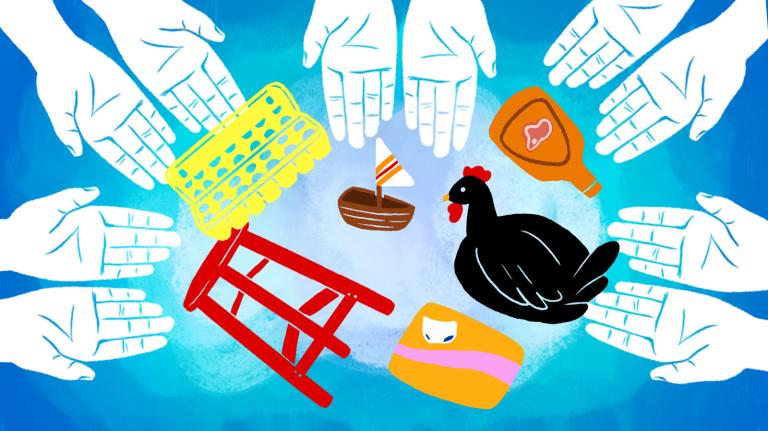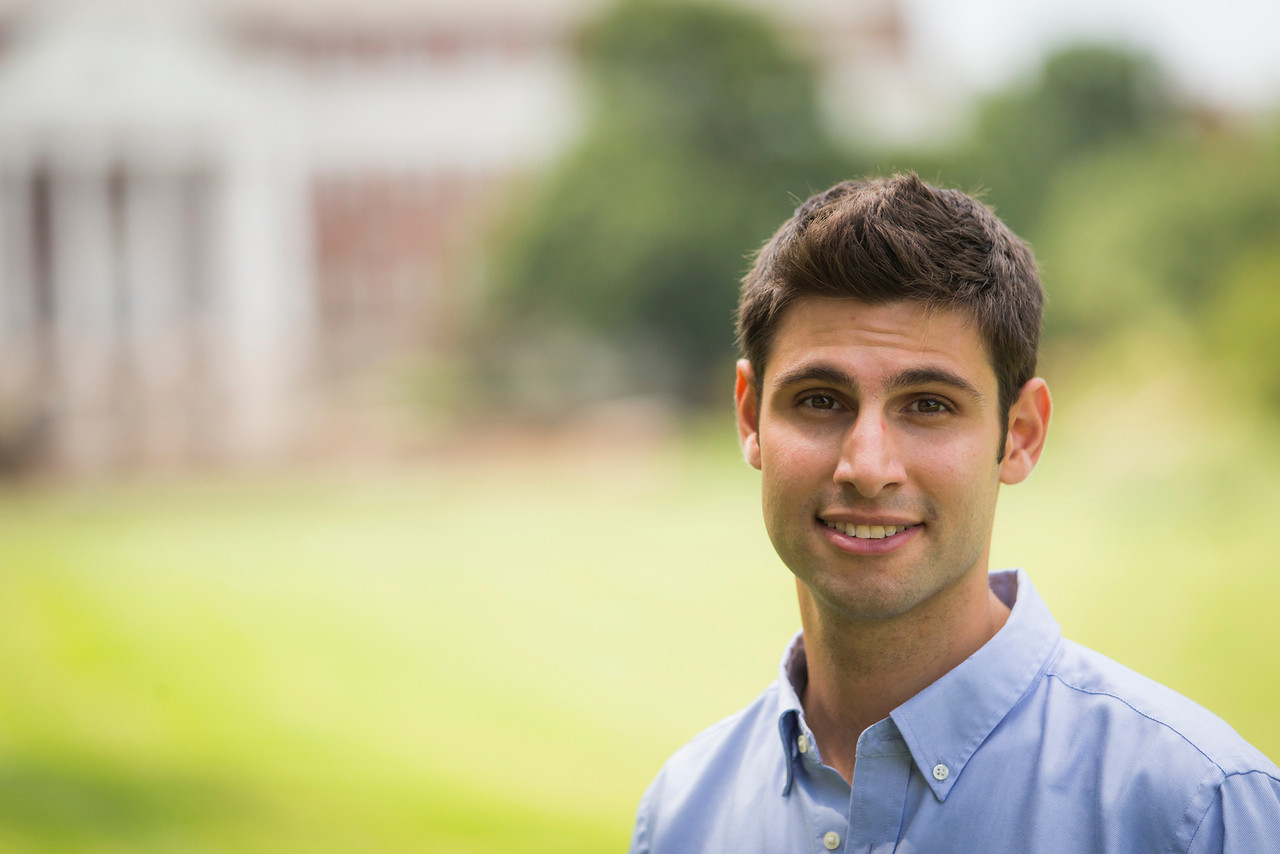Remember when you were a kid, and adults would ask what you wanted to do when you grew up? You’d say something really earnest, like, “I want to be a superhero!” or “I want to solve world hunger!” The grown-ups would throw their heads back and laugh, pat you on the head, and say something dream destroying, like, “Aw, that’s cute.” Well, Ben Simon is showing those grown-ups what’s up.
Simon, 24, is cofounder of Food Recovery Network, a nonprofit organization that collects surplus food from college campuses and distributes it to hungry community members. He started FRN while studying at the University of Maryland in 2011 with seven other college students around the nation. Now, there are 104 colleges that are part of FRN’s network, along with countless volunteers who collect and distribute the food. Though other organizations like City Harvest in New York City and D.C. Central Kitchen in Washington, D.C., also redistribute leftover food, FRN is unique in that it targets college campuses and student volunteers.
When it comes to organizing start-ups, Simon’s a hustler. He started MyMarland.net and The Love Movement — both nonprofits — while studying at the University of Maryland. Now, he’s working on a project called Hungry Harvest, a for-profit company that sells surplus produce at lower prices and donates a bag of produce for every one sold.
I recently spoke with Simon about the food waste problem in America and what FRN is doing to combat it. He told me that he wants to see food waste recovery become the norm so that, as the world becomes more populated, we have young, trained professionals who know how to redistribute food right onto the plates of hungry people. Here’s an edited and condensed version of our conversation:
Q. How big is the food waste problem in the U.S.?
A. Americans waste 40 percent of our food, and one in six Americans go hungry. We’re producing way more food than we need. It’s one of America’s biggest environmental problems.
Q. What first interested you in this issue?
A. The very first time I heard about how large the issue of food waste was, I was a sophomore at the University of Maryland. I had seen it on a small level in my daily life, too. I was shocked to walk onto the University of Maryland’s campus cafeteria and witness students throwing away half a sandwich like it was no big deal.
Q. What is the Food Recovery Network?
A. It’s a student-led model of food recovery. The students will partner with their dining hall, they’ll talk to the chef there, and set up a time to recover the surplus food that was prepared in one day but was not sold. The chefs will basically cart that food out where the students will be waiting. The [students] then package the food into aluminum pans, track the food to see how much they’re donating, and transport it to local agencies. We encourage the chapters to build a relationship with the agencies to make it more than just a transaction. We donate to all kinds of agencies: homeless shelters, transitional homes, after-school programs for kids, organizations serving veterans, and senior centers.
The face of hunger is really changing. The one change that I’ve seen over the past few years is a growing number of student food pantries; there’s actually more and more evidence to show that college students are missing meals because of a high cost of tuition and the things they have to pay for to be a student — sometimes they don’t know where their next meal is coming from.
Q. How did FRN get started?
A. We were thinking it’d be a great project for campus, and I think pretty early on we were thinking it could be something that we could do with other campuses. But we never thought about this being a job or a career in food recovery. That still surprises me. We were getting such a great response from students who had heard about it, and the colleges were loving that students were taking this initiative. The dining hall directors — the same people who were reluctant at first — now love the program.
Q. Did you encounter criticism in this process?
A. We hear stories a lot about students encountering barriers to get food recovery programs started. We also hear this from people in food service in general, people who asked their manager if they could donate surplus food but were given answers about why they couldn’t.
We encountered that as well when we initially pitched the idea to the University of Maryland’s dining services. Food service workers had questions about whether they had enough food to be donating, and they also had some questions about food safety and liability, which are some of the most concerns that we hear. So we tracked the cafeteria’s surplus food each day and wrote down how many pounds of food was wasted. In terms of food safety and liability, there is actually a federal law called the Bill Emerson Good Samaritan Food Donation Act, which states that restaurants and organizations can do this without facing any legal repercussions.
Q. What makes FRN unique?
A.Well, first of all, that it’s a student-run model, so we incorporate leadership training and empower [students] to be chief operators of their own campus-based nonprofits. We’re at 104 colleges, we’ll be at 160 by May, and by 2018 we hope to be at 500 colleges.
Q. I read that you are on a five-year plan for development. How will you grow?
A. We’re in the second year of that plan, and it’ll end in 2018. We’ve established national partnerships with food service companies, such as Sodexo and Bon Appétit, which represent 1,200 campuses. Another part of the longer term strategy is eventually scaling up beyond higher education. We want to expand to museums, elementary schools, airports, corporate campuses, and other venues. One approach we’re taking there is that we recently launched a certification program around food recovery, called Food Recovery Certified. It’s focused around making food recovery the norm in the food industry.
Q. Do you ever get discouraged about the size of the problem?
A. You have to stay positive. Sometimes it’s so crazy to think about the scale of the problem, it seems daunting. As a movement, we’ve come a long way. The EPA had an estimate that basically said of the 40 percent of food that was wasted, 3 percent of that “waste” — I air-quote that because some of it is surplus, it’s legitimately good food — went towards composting and recovery. Just three years later, it’s increased to 5 percent, which seems small maybe, but that’s a huge leap. It amounts to billions of pounds of food that is now feeding soil, animals, or hungry people. We’re excited about this. America and the world needs this to take off.




